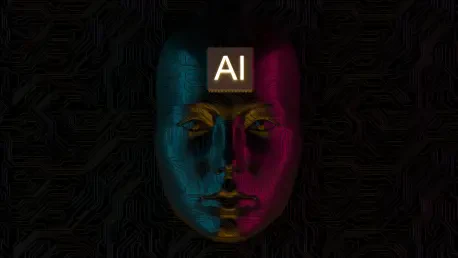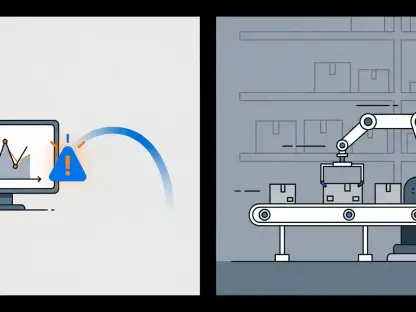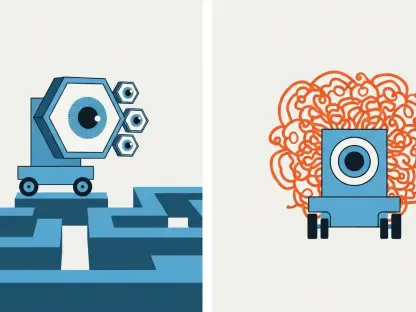What if a machine could rival a Ph.D. expert in any field, answering questions with precision and depth at the snap of a finger? This isn’t science fiction but the bold claim behind OpenAI’s latest release, GPT-5, the newest powerhouse driving ChatGPT. Launched amid skyrocketing expectations, this model arrives as a beacon of innovation, promising to reshape industries and personal interactions with technology. Yet, as excitement builds among 700 million weekly users, a pressing question looms: does this advancement truly mark a leap toward artificial general intelligence (AGI), or is it just another wave in the relentless tide of AI hype?
The significance of GPT-5 extends far beyond a mere software update. It stands as a critical benchmark for the AI industry, testing whether years of investment and anticipation can translate into tangible progress or if enthusiasm has outpaced reality. With fierce competition, ethical dilemmas, and societal implications at play, this release offers a moment to evaluate not just a product, but the broader trajectory of technology’s role in human life. This story delves into the features, challenges, and voices shaping the narrative around GPT-5, seeking to uncover what it means for the future.
Why GPT-5 Stands Out in Today’s AI Arena
At a time when artificial intelligence permeates everything from healthcare to education, GPT-5 emerges as a defining player in an already crowded field. Its debut follows intense public fascination and commercial investment, with the technology now influencing daily routines across the globe. The model’s arrival signals a chance to assess if AI can maintain its rapid ascent or if diminishing returns are setting in after years of breakthroughs.
Unlike previous iterations, this release carries the weight of heightened scrutiny. Policymakers and citizens alike are watching, concerned about issues ranging from job displacement to ethical misuse. GPT-5, therefore, isn’t just a tool for coding or conversation—it’s a symbol of whether the industry can balance innovation with accountability in an era of unprecedented integration.
Unpacking GPT-5: Innovations, Rivals, and Roadblocks
Diving into the specifics, GPT-5 brings a suite of enhancements that aim to redefine user experience. OpenAI’s leadership describes it as akin to consulting a top-tier expert on demand, with particular strength in coding applications. Accessibility is also a priority, as the model is available to free ChatGPT users with certain limits, while integrations with platforms like Microsoft’s Copilot hint at its potential to transform workplace efficiency.
Competition adds another layer to the story. Hot on the heels of Anthropic’s updated Claude chatbot, GPT-5 faces a crowded market where Google and international players are also vying for supremacy. Analysts from JPMorgan Chase have pointed out an “increasingly fragile moat” in the AI sector, suggesting that no company holds a permanent lead, which could spark price wars and further innovation to capture user loyalty.
Yet, challenges persist on multiple fronts. Safety remains a focal point, with OpenAI touting improvements to reduce deceptive or harmful outputs after past incidents where ChatGPT provided dangerous advice on sensitive topics. Additionally, as a for-profit entity now valued at $300 billion, the company grapples with legal disputes and the immense costs of infrastructure, highlighting the tension between its original mission and current market pressures.
Expert Perspectives and Real-World Testing
Insights from industry figures provide a grounded lens on GPT-5’s promise. OpenAI’s CEO, Sam Altman, positions the model as a “significant step” toward AGI, envisioning a future where AI outpaces human ability in valuable tasks. This ambitious outlook fuels optimism but also invites caution from others in the field.
Academic voices offer balance to the enthusiasm. John Thickstun of Cornell University acknowledges “modest but significant improvements” in benchmark performance, while noting substantial room for growth. Such measured takes suggest that while advancements are real, the path to revolutionary change remains long and uncertain.
Ultimately, the true test lies with users. As millions engage with GPT-5 for tasks like programming or complex problem-solving, their experiences will shape its reputation. Early feedback on practical applications will either validate claims of expert-level assistance or reveal gaps between promise and performance, offering a clearer view of its impact.
Charting the Path Ahead with GPT-5
For those eager to navigate this evolving landscape, several practical steps emerge from GPT-5’s rollout. First, leveraging its accessibility for free users provides an opportunity to explore its strengths in areas like research or technical projects. Testing its capabilities directly can reveal personal or professional benefits worth integrating into daily workflows.
Staying vigilant about ethical concerns is equally crucial. Users should critically assess responses, particularly on delicate subjects, and contribute to safety efforts by flagging problematic outputs. This collective responsibility helps refine AI systems while mitigating risks that have surfaced in prior models.
Monitoring the broader industry also proves valuable. As rivals respond to GPT-5 with new features or pricing strategies, keeping abreast of shifts can guide decisions on which tools align best with specific needs. Engaging in conversations about AI’s societal role further ensures awareness of how such technologies might reshape industries or communities in the coming years.
Reflecting on a Milestone in AI History
Looking back, the unveiling of GPT-5 marked a pivotal chapter in the journey of artificial intelligence. It showcased remarkable strides in capability and reach, while also exposing the persistent hurdles of safety and competition that defined the era. The blend of optimism and skepticism from experts and users alike painted a complex picture of progress.
Moving forward, the focus shifted to actionable engagement. Testing the model’s limits, advocating for ethical standards, and staying informed about industry trends became essential steps for anyone touched by AI’s influence. As the technology continued to evolve, the lessons from this launch served as a reminder to approach innovation with both curiosity and caution, ensuring that the promise of transformation aligned with the realities of responsibility.









